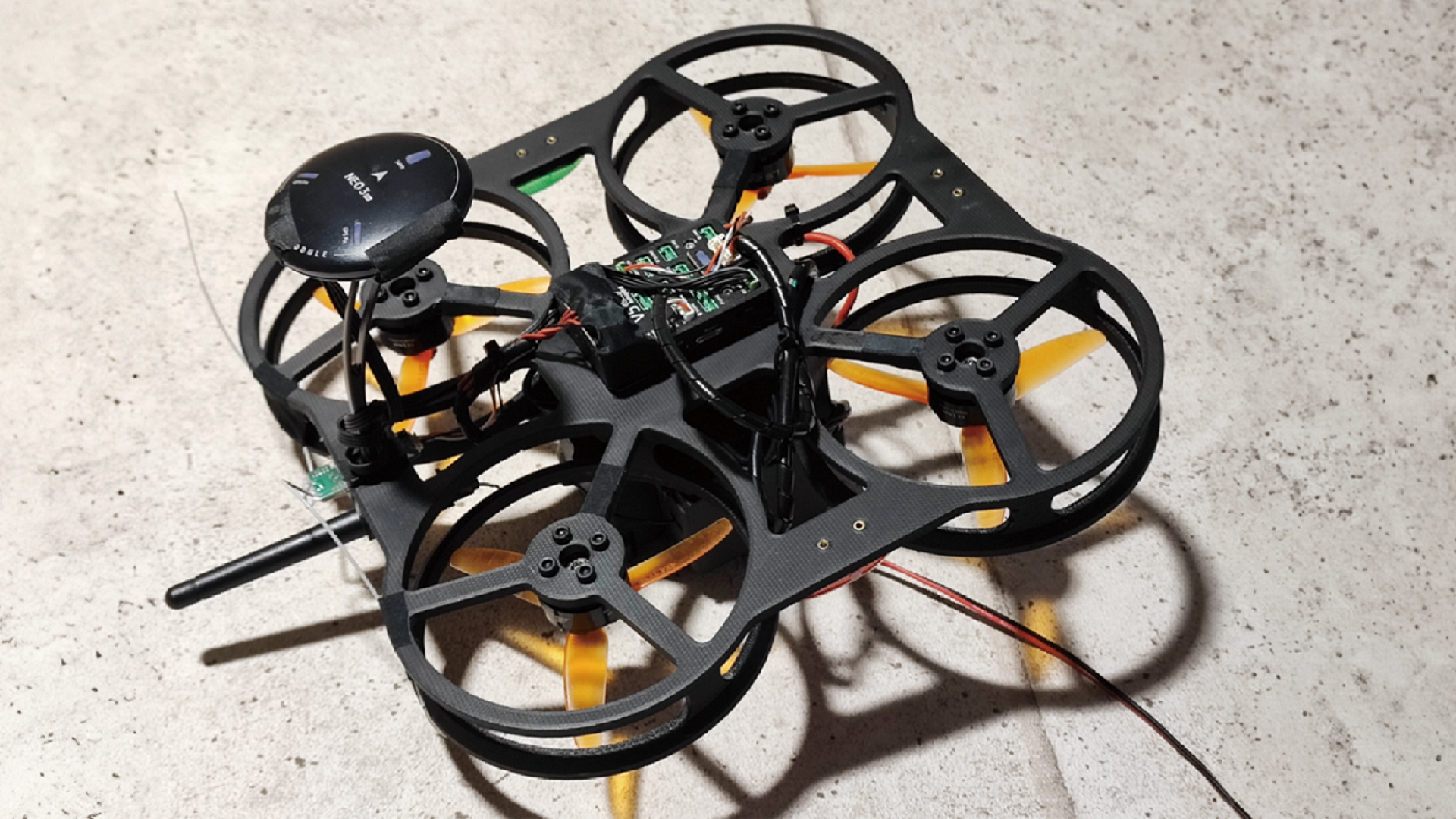Problem
“Can they be used for the inspection of large structures like buildings, bridges and dams?” pondered Ohta, a professional in the civil engineering industry. At that time, drones were mainly used to collect and transmit video and temperature data. Ohta aspired to advance drone technology so it could be used to conduct non-destructive inspections.
Thanks to a subsidy from Saitama Prefecture for robot development startups, BODUK acquired a 3D printer in 2013. During the next three years, Ohta and his team thoroughly tested the printer to understand “what it can do and how useful it is.”
In non-destructive inspections, internal data about a structure’s integrity can be collected using methods like striking a concrete wall from the outside or applying electromagnetic waves to it. A crucial component for this type of work is a proximity sensor. To utilize it on a flying craft like a drone, the combined weight of the sensor and the frame that holds it needed to be as light as possible.
“Depending on the type and size of the inspection equipment, the weight of the frame needed to support 1 kg of equipment is about 3 kg,” explained Ohta. This sensor frame also needed to be strong enough to withstand the harsh environments the drone may encounter while performing inspections.
Finally, for these frames to be mass-produced using 3D printing, the printer needed to be capable of reproducible precision so these parts could be reliably assembled during the production process. Maintaining this level of precision was a problem for some of the 3D printers Ohta and his team evaluated.
Solution
BODUK invested in a Markforged Onyx One and Mark Two in 2017. The company now operates 15 Markforged machines, including X7 industrial printers. Increasing the number of printers has multiplied the efficiency of BODUK’s manufacturing operations in powerful ways:
“With distributed batch processing, increasing the number of units is more effective than raising the speed of one unit, and it also helps us mitigate risks. For example, adding three units increases productivity by five times rather than three times,” explained Ohta.
Implementation
Markforged products have demonstrated their capability to meet BODUK’s sometimes conflicting requirements. For example, the combination of strength and flexibility can be seen in BODUK’s 3D-printed propeller guards. Carbon fiber is the perfect material for this application because of its optimal balance of toughness and flexibility. This enables it to protect the propeller without interfering with its function.
The reproducible precision of the Markforged printers can be seen in the smooth connections between the parts of BODUK’s drones, in which 50 mm carbon rods are used to align and connect 13 parts. “The Markforged 3D printers can achieve this precision within 0.02 mm,” asserted Ohta.
Overall, he’s very satisfied with the performance and precision of his Markforged printers:
“Their good yields reduce labor costs and allow people to work without stress. We’re also satisfied with the high precision reproducibility achieved through the linear guide. In short, they’ve been very cost-effective.”
Based on his estimates, the Markforged equipment has slashed manufacturing time by one-half to one-third compared to competing printers. “Reducing lost time not only cuts down on hidden costs, but it also frees up more time for improved product development,” Ohta added.
Outcome
BODUK’s expertise in developing aerial vehicles, such as aircraft and helicopters, fuels its development of unique industrial drones, including wall-climbing robots. The next phase of the company’s growth will be to develop and commercialize mobile robots for under-floor inspections. This is part of its efforts to create potential applications for drones and robots in narrow spaces that are challenging for human inspectors to access.
“I believe there’s still potential to generate demand in the construction and civil engineering industries. For example, one possible application could be an inspection jig used at a highway maintenance site. It would primarily act as a guide to aid manual labor by workers,” Ohta envisions.
Ohta’s ideas flow as freely as a drone soaring through the sky. With Markforged printers, there’s every reason to believe he’ll be able to transform many of them into innovations that will benefit the industries his company serves.

